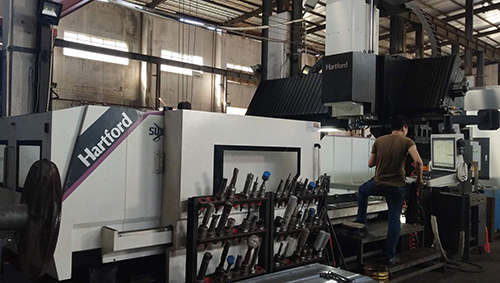What is the most important parameter in CNC machining of Jiangmen?
We usually do CNC, no matter which programming software you use, no matter which version you use, in the final analysis, we are setting the following parameters.
1: The cutting depth is the cutting depth of each layer;
For example, if you use a knife to cut radishes, how thick each radish is!
This is better to understand. Someone is very urgent to ask the teacher, how much should I process each floor?
Ask yourself this. Because the tool diameter as long as you know. Your tool is 80mm, 30mm, 1mm, even 0.3mm.
What's the concept of 0.3mm? It's three pieces of 1-like paper stacked together, which is the thickness of a business card. I used to grind a lot of 0.3 cutters on the grinder.
And you're going to process that material. You are processing cake or wood, or aluminum or copper.

If you cut the cake, the plastic knife will do it!
It's like you cut wood with an axe. You go down 1cm with one axe. That's 10 mm
Why don't you cut iron with an axe? As soon as you get down, your knife will fall!
If you change a suitable axe, you can use it to cut iron.
2: The rotation speed of the spindle is the rotation speed of the motor (also known as the motor) in the machine tool, which is also the rotation speed of the tool n.
Because it's a little difficult to understand, I'll help us understand.
The rotation speed of the tool can be converted into linear speed. Because the tool is installed on the chuck and rotates continuously, it is difficult to know how fast it is. If it's a car and a bike, and a motorcycle, it's a good idea. Because you have a better visual experience, you can even convert how many kilometers per hour, how many kilometers per minute, how many meters per second.
Formula for calculating linear velocity: we usually see it in books like this.
But it's written like this.
v=π*D*n/360
V: that's velocity. It's actually called linear velocity. It can be understood as linear velocity.
π: It's the PI, which is usually 3.14.
D: It's the diameter of the tool. In fact, the speed we calculated in this way is the speed on the edge of the maximum diameter of the tool.
n: It's the speed of the motor.
Here, many people have a mistake, including experts!
-
02-20
What is the most important parameter in CNC machining of Jiangmen?
We usually do CNC, no matter which programming software you use, no matter which version you use, in the final analysis, we are setting the following parameters.1: The cutting depth is the cutting dep
-
02-20
Cleaning steps of lubricating device of CNC milling machine
Many parts of the lubricating device of CNC milling machine need to be cleaned regularly. The specific cleaning methods are as follows. (1) Cleaning method of oil rope and felt. Oil rope and linole
-
02-20
How to choose the right cutting tool for Jiangmen CNC machining
How to select cutting tools reasonably in Jiangmen CNC machining The selection of cutting tools is carried out under the condition of human-computer interaction of NC programming. The tool and hand
-
02-20
What are the rust removal methods of Jiangmen CNC machining precision parts
The machining of fine parts or parts, such as bearings, etc. will produce embroidered corrosion due to improper storage conditions or rust prevention, which can not be treated by mechanical method at

